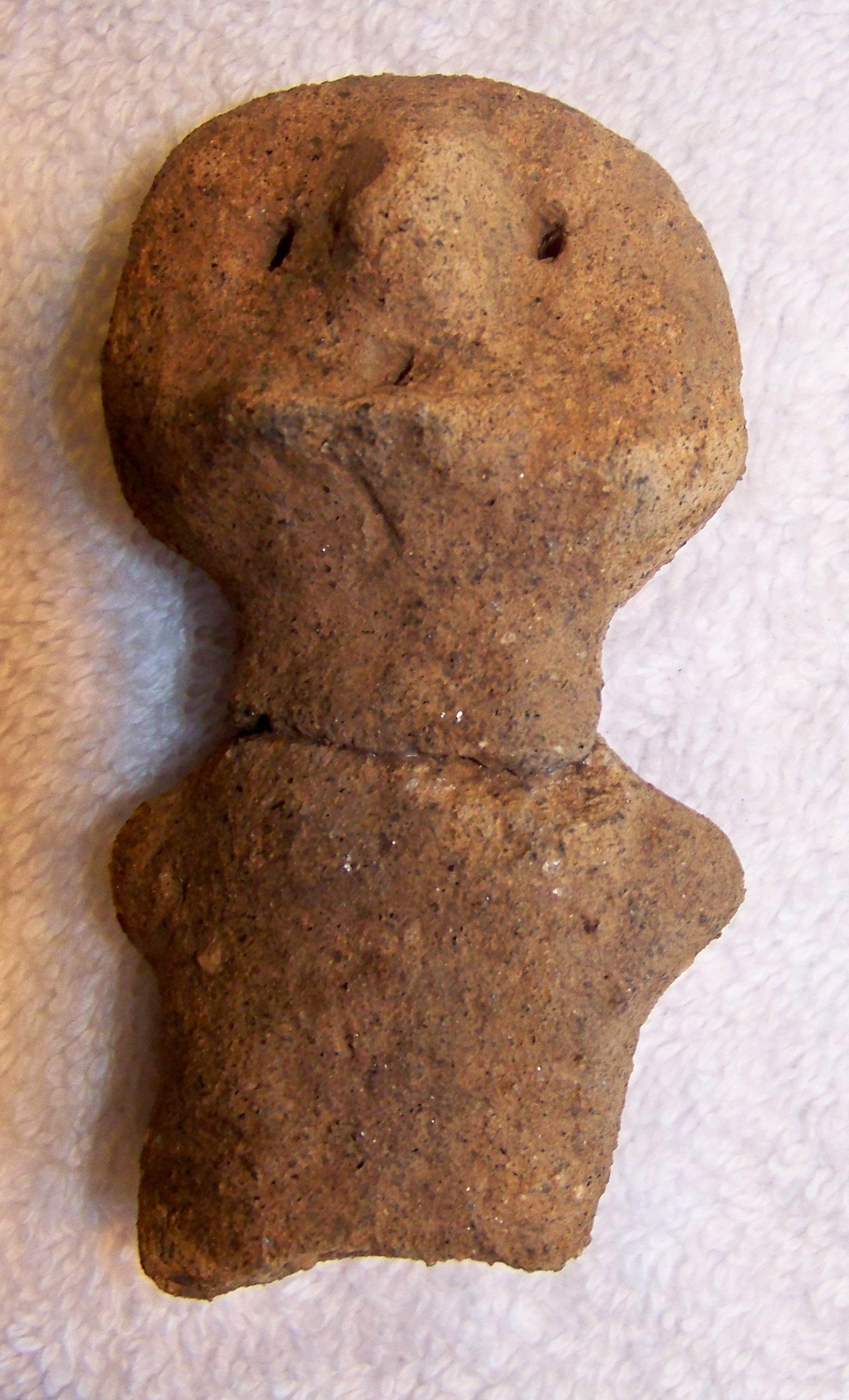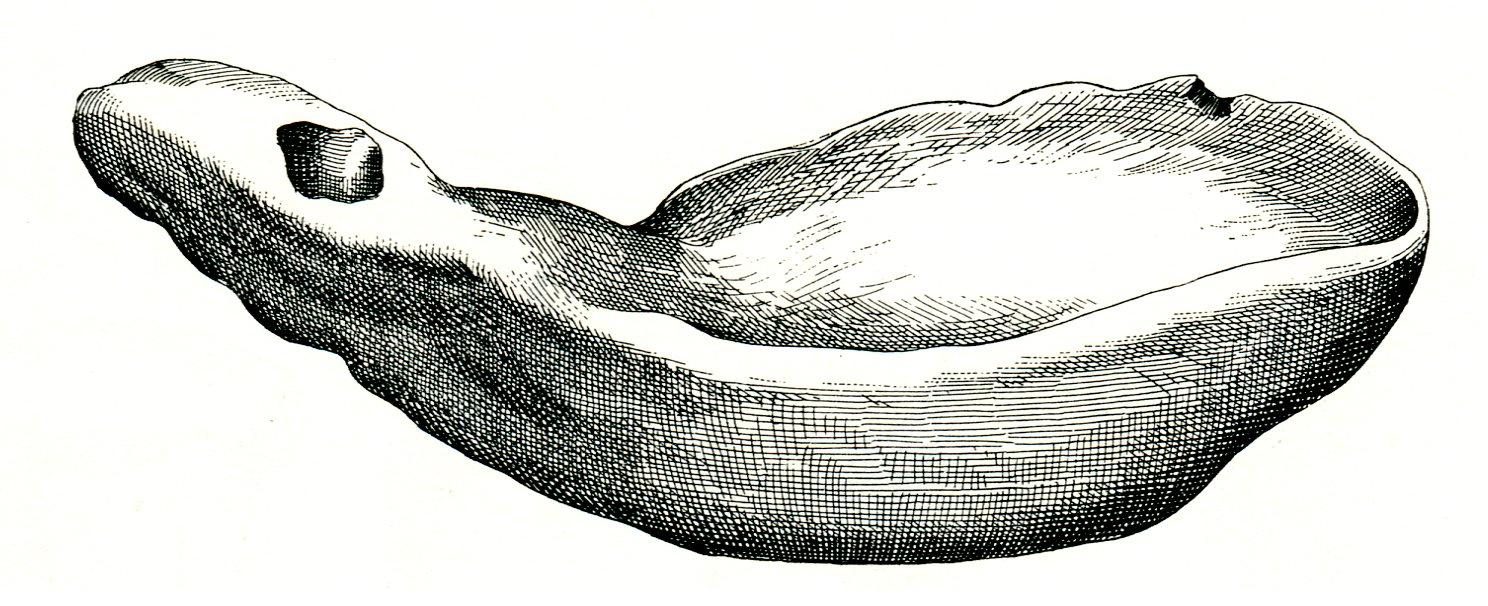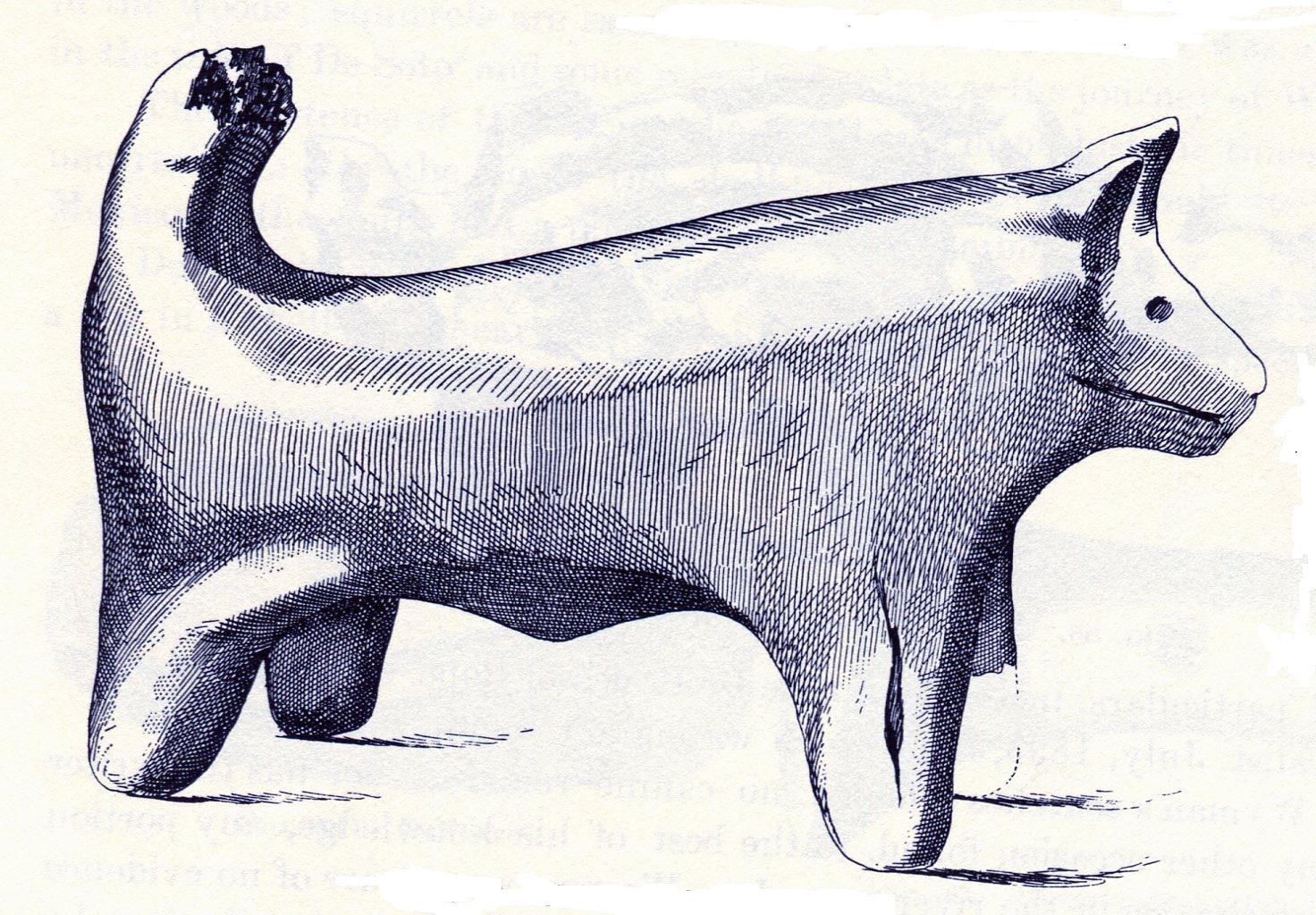These two figurines were both recovered at the Ocmulgee National Monument located in Macon, Georgia. The site was inhabited by cultures over many periods. Clay figurines of this type most often belong to the Swift Creek culture that had a strong presence across all of Georgia and that was an important part of the Hopewellian trade complex.
Many of the sites associated with the Hopewellian trade system have yielded clay and stone figurines. The work of Christopher Carr and D. Troy Chase (Gathering Hopewell: Society, Ritual and Ritual Interaction) shed some light on their creation, design and use by answering some key questions.

Do all figurines belong to Hopewellian related sites? This small figurine was recovered from a site that was nearly exclusively Deptford in Rockdale County Georgia. The figure has a series of holes across the top of the head from side to side that may have accommodated the insertion of feathers, similar to the feathered headdresses of the Southern Ceremonial Complex. It may be one of the earliest figurines related to this trade sphere.
Were figures produced in ceremonial or domestic contexts?
Many of the Ohio Hopewellian sites contain “special activity workshops.” These types of areas within large sites are not unique to Hopewellian sites. The Poverty Point site also contained these “special” areas for the production of projectile points, clay baking stones, plummets, beads, etc. The Hopewellian sites also contained sites for such productive purposes, however none of the Ohio related sites contained any special areas for the production of figurines. Evidence of locations for the production of pottery is known only in domestic contexts in Ohio, Indiana and Illinois. It appears that pottery and clay figurines were made and fired primarily in residential sites.
The first of these figurines is from the Mann site and seems to reflect the values of family and child rearing involved in the Middle World. The figure on the right is that of a woman of the Hopewell society.
Who made these figurines?
Clay is an easily accessible and workable medium, and may have been used more naturally by women.Researchers believe that the appearance of figurines in primarily domestic middens in the Mann and Havana areas is a strong reason for concluding that women were the primary makers of figurines.The more labor intensive crafts of stone and mineral working was left to men.
A second reason for concluding that women were the primary creators of figurines is their naturalistic style. Clay figures rarely show facial scars, tattoos, geometric painting similar to that found on stone figures, believed to be made by men. Both stone figures (including pipe figures), shell and copper figures contain the ceremonial symbols that are strong indications of male manufacture and ceremonial association. Hopewellian women were more interested in the Middle World of child rearing and day-to-day activities on earth. Cross cultural studies have shown that the production of pottery is most often a division of labor that belongs primarily to women.

The Wray figurine depicts the dress of a Hopewellian shawman and demonstrates the roll of women in mortuary and ceremonial life of her society.
What role did figures play in mortuary customs?
The inclusion of decorative ceramics and figurines in grave sites speaks to the highly influential role of woman in Native American society. The inclusion of symbols from both Upper and Lower worlds demonstrates the inclusion of women in areas other than the normal day-to-day Middle World activities. It might be argued that these mortuary wares were made by men, making the role of women in these activities less clear, however, the study of plain and decorated wares from midden sites argue that they were made by the same potters.
Were clay effigy figures limited to human forms?
It is true that the vast majority of figurines are of human forms and reflect the relationships and activities of people, however, there is at least one notable exception. During C.B. Moore’s excavations down the St. Johns River in Volutia County, Florida, Moore came upon the Thursby mound. Moore recorded, “In an oblong space, 6 feet in breadth and about 25 feet in length, beginning 18 feet from the center of the summit plateau on the southeastern slope and extending to the margin of the base, from 4 inches to 1 foot below the surface was a deposit of pottery amazing in number and variety of specimens, including pots, dishes, bowls, effigies of animals, of plants and of various other objects.” We have pictured Moor’s drawings of many of these objects. They reflect the subsistence of these Late Mississippian and Historic people.
Beaver and the woodland bison were available to hunt until the eastern bison became extinct in about A.D. 1700.
There were plenty of squirrel to fill the stew pots.
Puma and other forms of wild cat must have provided the occasional meal.
Turkey and wild hogs were abundant in the river environment.
Conch and other kinds of shellfish were a valuable source of food and trade.

and mounds of oyster shells lined the St. Johns River.

Dogs were domesticated, but were also found among the remains of middens and may have served as a food source.
Loggerhead and snapping turtles must have filled the slow-moving St. Johns River.

along with an abundance of otter and fish.
Various kinds of mushrooms, acorns and nuts must have been gathered to add to the diet.
Prickly pears (a red, sweet fruit that grows on cactus) grew wild and various kinds of squash was cultivated along with maize to round out a picture of the diet of these early people. Each of these effigy figures measured between 2 and 4 inches in size.